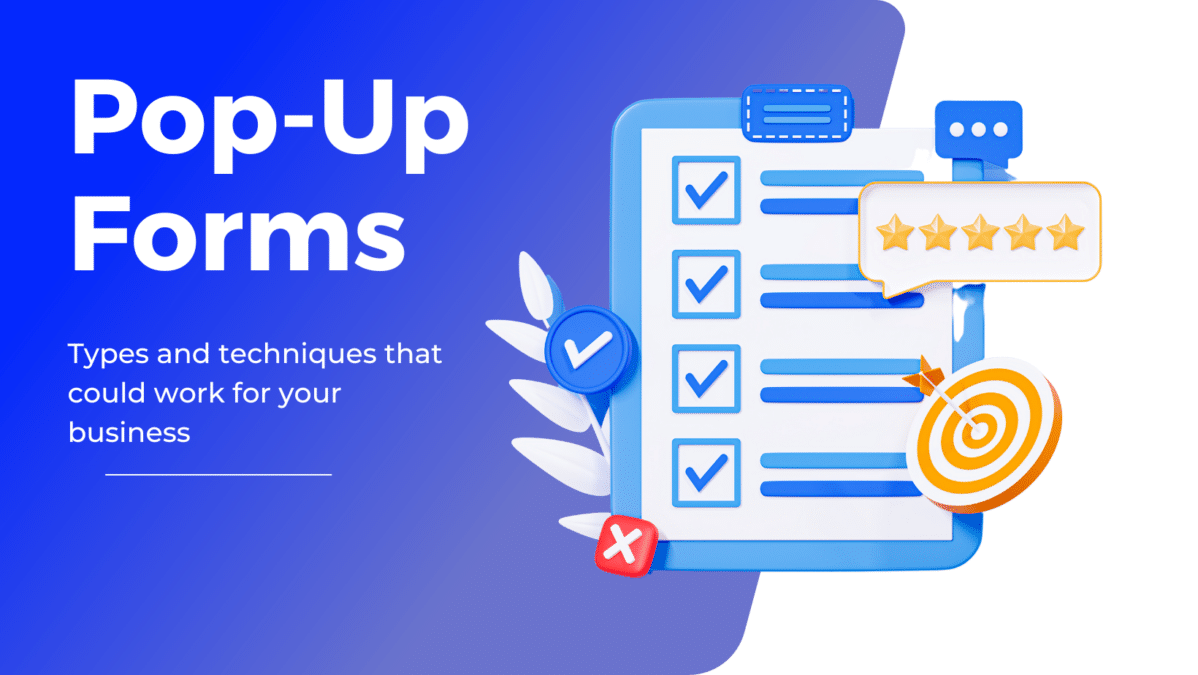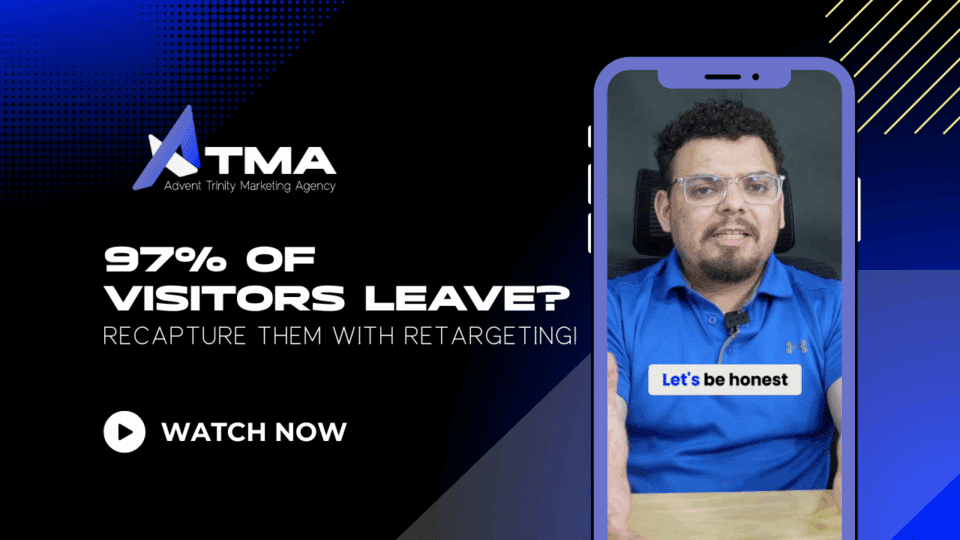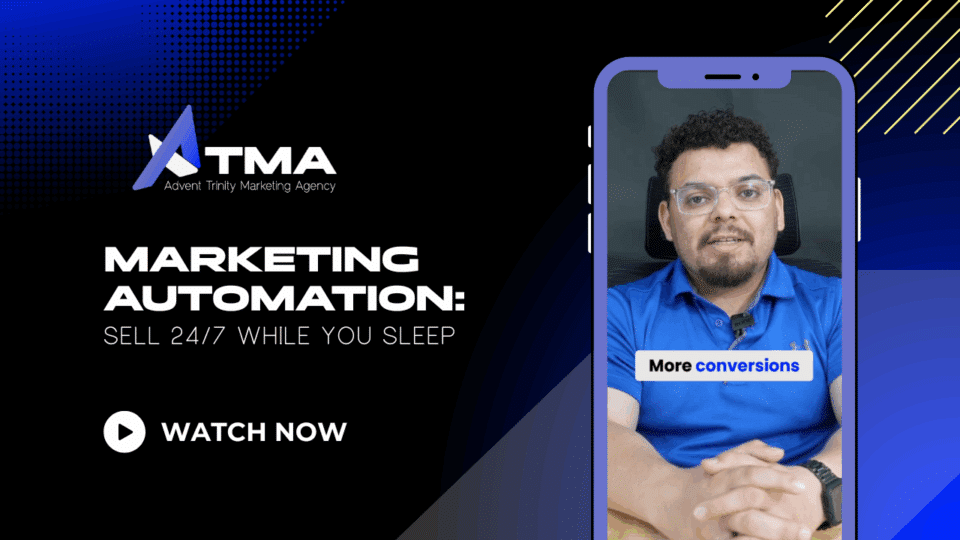
Important Website Pages You Need On Your Business Website
December 1, 2022
What A Successful Buyer’s Journey Looks Like
December 15, 2022Should I Use Pop-Up Forms on My Website?
Pop-up forms are a great tool to capture leads on your website. There are a handful of types and techniques that could work for your business.
There’s no doubt that pop-up forms are effective tools for capturing leads and growing your email list. But should you be using them on your website? In this blog post, we’ll explore the pros and cons of pop-up forms and help you decide whether they’re right for your business.
What is a Pop-Up Form?
A window that opens while a user navigates a website is known as a pop-up form. Numerous actions, including interacting with a page element, scrolling, and idleness, might cause it to be activated. Pop-up forms can improve website users’ experiences and increase conversion rates when they are used in the right context and with added value.
Types of Pop-Up Forms
- Welcome Mats
- Overlay Modals
- On-Click Pop-Ups
- Gamified Coupons
- Top Banners
- Slide-In Boxes
There are a few different types of pop-up forms you can use on your website, each with its own advantages and disadvantages.
Welcome Mats
Welcome mats are large pop-ups that cover the entire screen when a visitor first arrives on your site. They’re typically used to offer a discount or promotional code in exchange for an email address. Welcome mats can be effective at getting visitors to sign up for your email list, but they can also be intrusive and annoying. If you use a welcome mat, be sure to test it carefully to ensure it doesn’t turn visitors away from your site.
Overlay Modals
Overlay modals are pop-ups that appear in the middle of the screen, typically when a visitor is trying to leave your site. They can be used to offer a discount or promotional code or to get visitors to sign up for your email list. Overlay modals can be effective at getting visitors to take action, but they can also be intrusive and annoying. If you use an overlay modal, be sure to test it carefully to ensure it doesn’t turn visitors away from your site.
On-Click Pop-Ups
On-click pop-ups appear when a visitor clicks on a specific element on your website, such as a button or image. They can be used to offer a discount or promotional code or to get visitors to sign up for your email list. On-click pop-ups can be effective at getting visitors to take action. They are not as intrusive and annoying, but they can be harder for the user to spot.
Gamified Coupons
Gamified coupons are pop-ups that offer a discount or promotional code in exchange for completing a game or quiz. They can be effective at getting visitors to take action, but they can also be time-consuming and frustrating if the game is too difficult.
Top Banners
Top banners are pop-ups that appear at the top of the screen, typically when a visitor is scrolling down your page. They can be used to offer a discount or promotional code or to get visitors to sign up for your email list. Top banners can be effective at getting visitors to take action, but they can also be intrusive and annoying. If you use a top banner, be sure to test it carefully to ensure it doesn’t turn visitors away from your site.
Slide-In Boxes
Slide-in boxes are pop-ups that appear in the bottom corner of the screen, typically when a visitor is scrolling down your page. They can be used to offer a discount or promotional code or to get visitors to sign up for your email list. Slide-in boxes can be effective at getting visitors to take action, but they can also be intrusive and annoying. If you use a slide-in box, be sure to test it carefully to ensure it doesn’t turn visitors away from your site.
When to Use Pop-Up Forms
There are a few situations when pop-up forms can be effective.
If you’re looking to grow your email list: Pop-up forms can be an effective way to get visitors to sign up for your email list. Just be sure to use a pop-up that’s unobtrusive and easy to close if a visitor isn’t interested.
If you’re looking to offer a discount or promotional code: Pop-up forms can be an effective way to offer a discount or promotional code. Just be sure to use a pop-up that’s unobtrusive and easy to close if a visitor isn’t interested.
If you’re looking to get visitors to take action: Pop-up forms can be an effective way to get visitors to take action. Just be sure to use a pop-up that’s unobtrusive and easy to close if a visitor isn’t interested.
The Pros and Cons of Pop-Up Forms
There’s no denying that pop-up forms can be effective tools for capturing leads and growing your email list. But before you add them to your website, it’s important to weigh the pros and cons to decide if they’re right for your business.
On the plus side, pop-up forms can be highly effective at getting visitors to sign up for your email list or download a piece of content. They’re also relatively easy to set up and can be customized to match your website’s design.
On the downside, pop-up forms can be intrusive and annoying, especially if they’re not well-designed or placed strategically on your website. If they’re not used carefully, they can quickly turn visitors away from your site.
So, should you use pop-up forms on your website? Ultimately, the decision comes down to what’s best for your business. If you think pop-up forms will help you achieve your goals, go for it! Just be sure to test different designs and placements to find what works best for your visitors.
Do Pop-Up Forms Work?
Yes.
According to Sumo’s study from 2019, the top 10% of pop-up forms convert at a staggering 9.3%.
Over 80,000 companies utilizing Klaviyo’s software were examined in 2021, and it was discovered that slide-out pop-ups convert at a rate of 2.2% and overlay modal pop-up forms at a rate of 3.2%.
HubSpot polled 100 consumers to learn more about their behaviors in order to go deeper into why some pop-up forms perform better than others. A clear description of the benefits of completing a form, according to 50% of respondents, is what gets their attention the most — meaning the offer.
The conversion rate will also be significantly influenced by the form’s length and interesting description. In fact, 50% of respondents claim that the length of a pop-up form can make them abandon it. The likelihood that they may disengage increases with form length. 20% of people claim they will not fill out a form if they feel the questions are intrusive.
It’s much simpler for users to provide a name and an email than it is to provide a phone number and home address, however, this can vary per form. The pop-up form’s conversion rate heavily depends on the questions you choose to ask.
Create the Perfect Pop-Up Form
Ultimately, the decision of whether or not to use pop-ups on your website comes down to understanding your audience and what will work best for them. If you’re not sure where to start, our team of experts can help you build a website that meets your needs and drives conversions. We take the time to understand your business and create a custom solution that works for you. Contact us today to get started.




